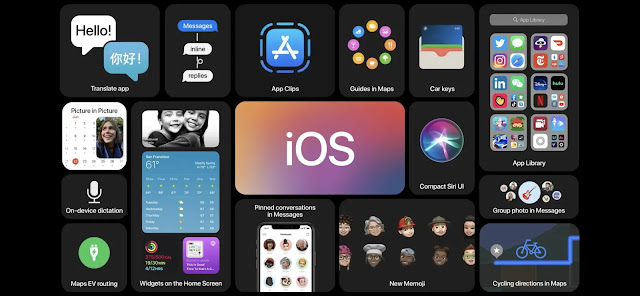Apple WWDC 2020: iOS 14, macOS Big Sur & Apple Silicon
Apple took to its annual developer keynote to unveil the next generation of software and hardware, showing off all of the updates coming to iOS, macOS, and watchOS it builds in-house. The iPhone maker has a pattern of taking features from Android and making it better (despite being last) and this year was no different, with iOS 14 set to add support for widgets and instant apps. Here's a quick rundown of all the highlights -
- iOS 14 with redesigned home screen with support for data-rich widgets (that seems to be clearly inspired by designer Jay Machalani's iOS 8 concept which he released six years ago), picture-in-picture mode, updated Shortcuts with folder organisation, copy and paste actions, and new automation triggers, emoji search in keyboard, pinned and threaded conversations in Messages, new offline translation app, revamped compact UIs for Siri interactions and incoming calls, ability to set default email and browser apps, new App Library that automatically organises all apps into one simple, easy-to-navigate view, and CarKey, letting users unlock, lock, and start their cars using an iPhone or Apple Watch.
- iPadOS 14 with improved widgets and handwriting recognition (via Apple Pencil), and a new universal search bar.
- macOS Big Sur (version 11.0) with an all-new design that takes cues from iOS, Safari with faster browsing and built-in translation, new Control Center, redesigned Notification Center with widgets, updated Messages, and capabilities to run iOS and iPad apps natively on new Macs that are powered by the company's Apple-built ARM chips (more below).
- watchOS 7 with sleep tracking, new watch faces and Face Sharing feature, support for Shortcuts and new workout types, including core training, functional strength training, and dance, cycling directions, and automatic hand washing detection.
- In hardware news, Apple is moving to its own ARM-powered Apple Silicon chips for Macs over the next two years, promising new levels of performance and far less power consumption, with Rosetta 2 to be used to provide backwards compatibility with Intel-based features and automatically translate existing apps at install time.
Some other miscellaneous announcements:
- App Clips, a new way to try out apps from participating businesses via a visual code or NFC (similar to Android's Instant Apps), that act as small, on-demand apps (or applets) to complete a specific task such as renting a scooter, purchasing a coffee, or filling a parking meter, without having to download the full app.
- App Clips and Instant Apps live in a liminal zone between web based apps and apps users want to permanently keep on their phones, but given that these solutions are proprietary to iOS and Android, it remains to be seen if they are any better than using a web app to accomplish the same functionality.
- What's more, App Clips also leverage Apple Pay and Sign in with Apple, indirectly turning it to another means to lock users into its ecosystem. I wouldn't be surprised if there's a significant uptick in the rate of adoption for Sign in with Apple, what with people preferring this option rather than having to set up a whole new account to just pay an electrician for its services.
- Updated Find My app to track down third-party products and accessories with the new Find My network accessory program, potentially allowing object trackers such as Tile and its unannounced AirTags (which have reportedly been in the works for some time) to be integrated into the platform.
- But there's a catch: Apple will prevent third-parties from letting customers use their own app if their hardware is accessible in the Find My app. "Apple customers who use Find My to locate a device will be barred from using other competing services simultaneously," according to a document titled "Find My Network Accessory Spec."
- An extension converter tool to make it easier for developers to port Firefox or Google Chrome extensions to Safari.
- Revised App Store guidelines that will now allow developers to appeal a specific violation of an App Store guideline, in addition to instituting a separate process for challenging the guideline itself. (Is this a sign of Apple yielding to developers after the Hey fiasco?)


Comments
Post a Comment